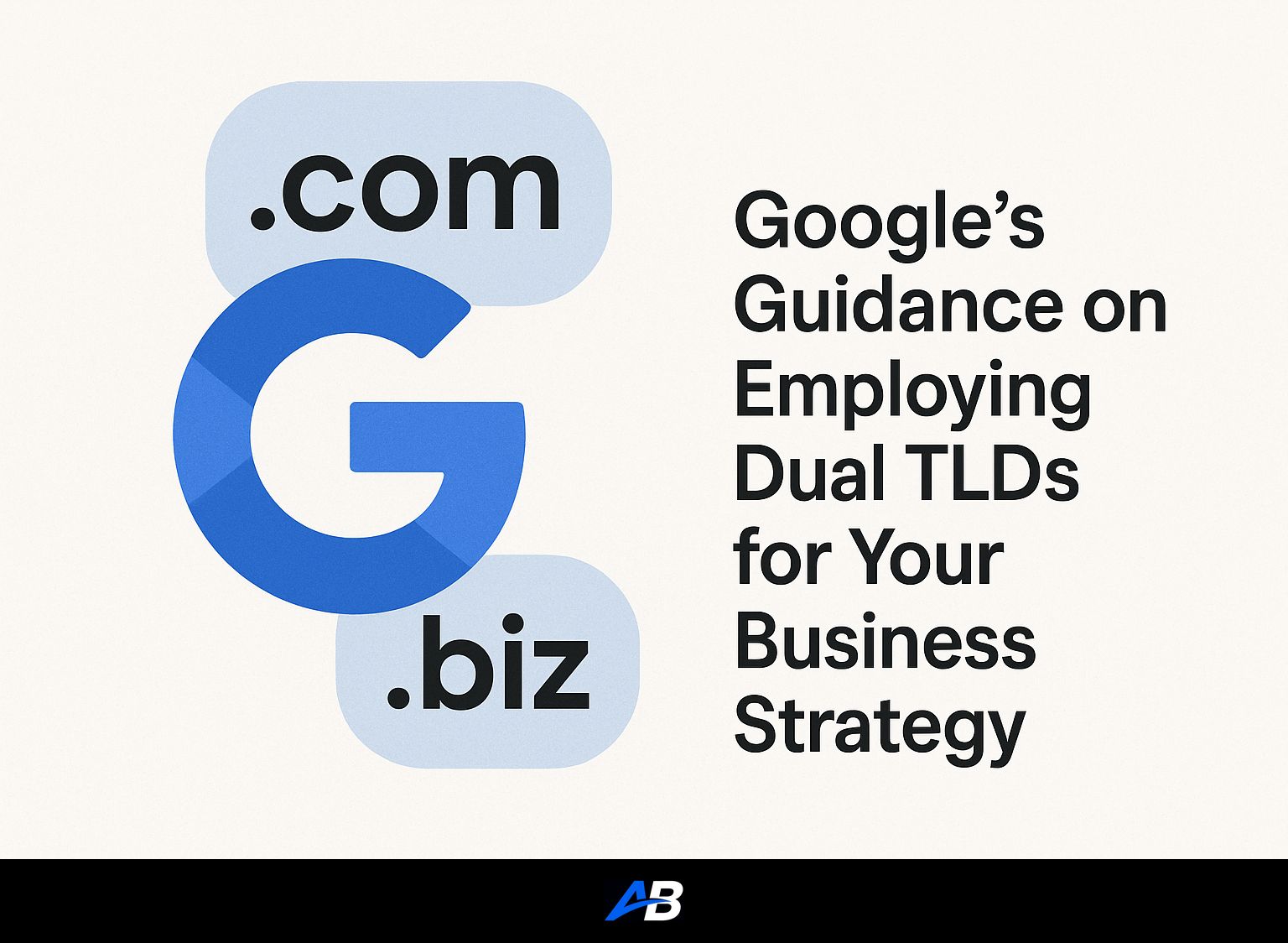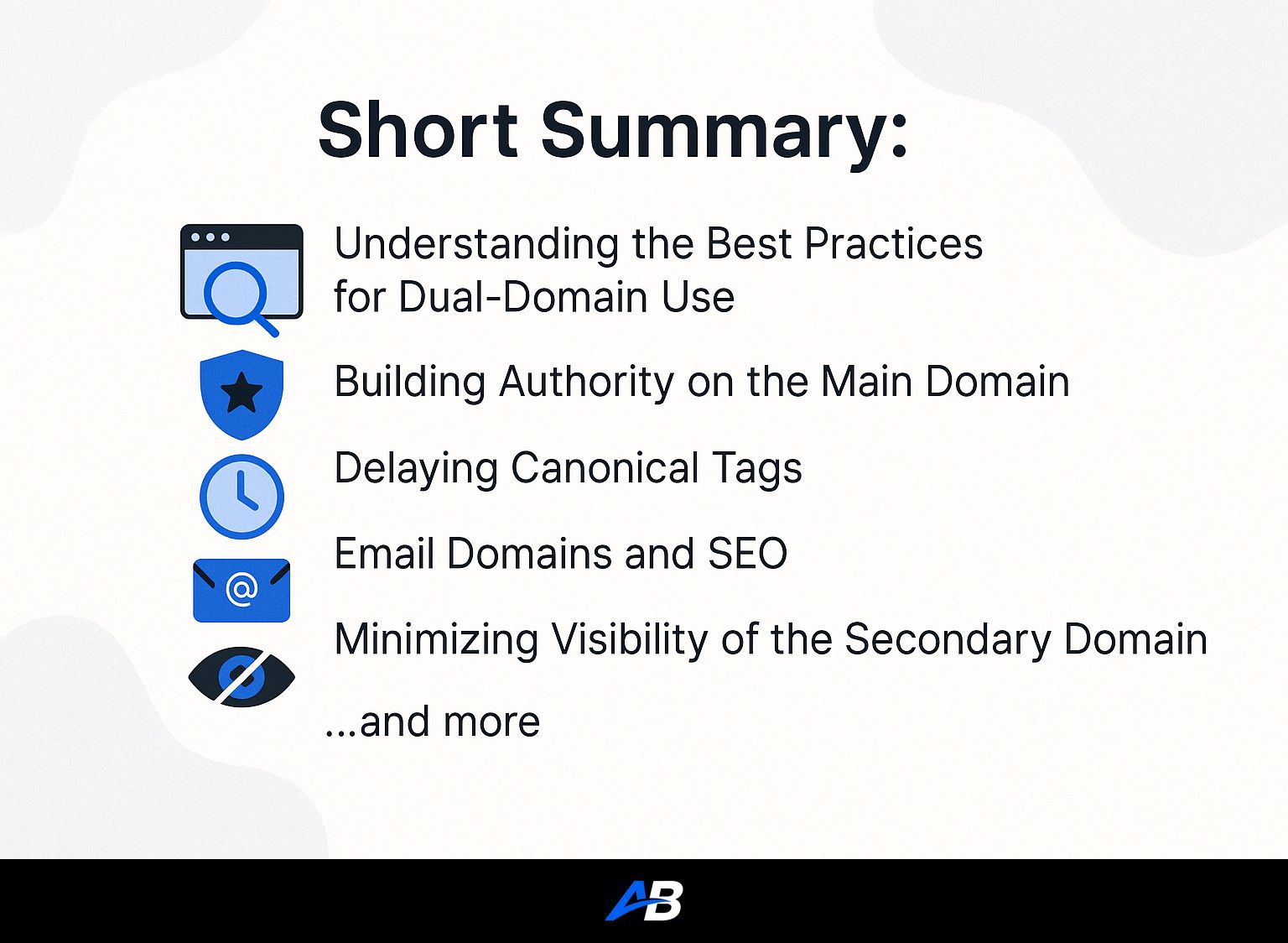In recent discussions surrounding domain management for businesses, Google’s John Mueller clarified how companies can effectively utilize dual Top-Level Domains (TLDs) without compromising their search engine optimization (SEO) strategy. His insights shed light on best practices for managing multiple domains while ensuring clarity for search engines.
Short Summary:
- Use 301 redirects to consolidate domains effectively.
- Focus your SEO efforts on one primary TLD to prevent competition.
- Delay the use of canonical tags until migration is complete.
As digital landscapes evolve, so too do the strategies surrounding online presence. Recent dialogue between businesses and SEO experts has spotlighted the need for clear direction on managing multiple domain types. Specifically, Google’s John Mueller took to Reddit to offer invaluable guidance on how companies can successfully operate two different TLDs, such as using a .co.uk for regular search visibility while maintaining a .digital domain for marketing campaigns.
The key takeaway from Mueller’s remarks is straightforward: businesses should strive to avoid internal competition between TLDs. The roadmap he outlines can be summarized in five essential steps designed to streamline SEO practices while maintaining a strong online identity.
Understanding the Best Practices for Dual-Domain Use
“Do a normal site migration first — 301 redirect all pages from your secondary domain to your primary one.”
The first step is to conduct a thorough migration of your content from the less active domain (e.g., .digital) to the main domain (e.g., .co.uk). Employing a permanent 301 redirect ensures that users and search engines understand where your content resides, allowing for a seamless transition without sacrificing accumulated link equity and page authority.
Building Authority on the Main Domain
As you strategize the dual-domain setup, prioritize nurturing your primary TLD. This involves creating a robust link-building strategy, focusing your SEO efforts, and generally cultivating a web presence around that main site. The traffic to your second TLD should direct users back to the primary site, reinforcing its significance in the eyes of search engines.
“It’s super obvious to search engines which domain you want.”
In essence, your core domain should remain prominent. This clarity prompts Google to rank your primary TLD accurately, thereby enhancing your overall visibility across search results.
Delaying Canonical Tags
Mueller advises against using canonical tags during the initial phases of domain migration. Instead, he emphasizes the strength of 301 redirects.
“301 redirects are a strong signal for canonicalization; rel=canonical is less so.”
In other words, directing traffic with a 301 provides a more robust signal to Google than relying solely on canonicals until after the migration is settled. This period allows time for the primary domain to establish itself as the authoritative source of content. Only after you’ve fully integrated your SEO signals should you consider implementing canonical tags for any duplicated campaigns.
Email Domains and SEO
Another point raised was the misperception about email domains impacting SEO. Mueller clarified that having an email address associated with your secondary domain does not affect ranking performance. Therefore, businesses can retain their branding while customizing email domains without jeopardizing their SEO strategy.
Minimizing Visibility of the Secondary Domain
Perhaps the most critical tip is maintaining the invisibility of the secondary domain to search engines. This involves using noindex tags, utilizing the robots.txt file to block search bots, and ensuring all traffic redirection goes to the primary domain.
“Your secondary domain should be ‘virtually invisible’ to crawlers.”
This creates a streamlined experience that allows search engines to focus solely on your main digital property. By eliminating any potential confusion or overlap, you are enhancing your chances of increased visibility and search rankings.
The Importance of 301 Redirects in 2025
What’s the importance of 301 redirects in today’s SEO landscape? Simply put, they remain a leading method for signaling content migration to both users and search engines alike. By using a 301 redirect, you are not only telling search engines that the content has moved, but you are also consolidating important ranking signals, safeguarding your online visibility.
Mueller stressed the notion that a 301 redirect constitutes a permanent signal, ensuring that SEO equity is maintained during any transition between domains. This is critical as companies might embark on rebranding or restructuring their web properties without losing their hard-earned SEO momentum.
Consolidating Your Digital Identity
Ultimately, Mueller’s insights reinforce a core principle in SEO: clarity is paramount. Multiple domains might seem like a creative tactic for branding or marketing but can quickly turn into an SEO quagmire if not managed correctly. Instead of diluting your online presence, businesses should aim for consistency.
“Choose one domain as your ‘main digital home’.”
As digital marketers and business owners consider dual-domain strategies, they must align their goals with a clear road map that prioritizes their primary TLD, allowing SEO and brand authority to thrive without unnecessary complications.
Final Thoughts on Dual TLD Strategy
While it may be tempting to harness the versatility of different TLDs, approaching this strategy without plan can lead to unintentional SEO pitfalls. Instead, any secondary TLD should serve a different function, like tracking marketing campaigns or focusing on region-specific content while ensuring it stays tethered back to the main domain for solid SEO performance.
In conclusion, if done right, a dual TLD strategy can bolster a company’s web presence—but it requires diligence, strategic planning, and an unwavering focus on maintaining clarity. For those navigating this complex landscape, consider expert resources or tools like Autoblogging.ai, which guide content creation while optimizing for SEO. Keeping pace with the changing SEO environment has never been more essential, especially as AI continues to redefine how users search digitally. As always, simplicity and transparency will lead to sustained success in the ever-competitive digital sphere.
Do you need SEO Optimized AI Articles?
Autoblogging.ai is built by SEOs, for SEOs!
Get 30 article credits!


